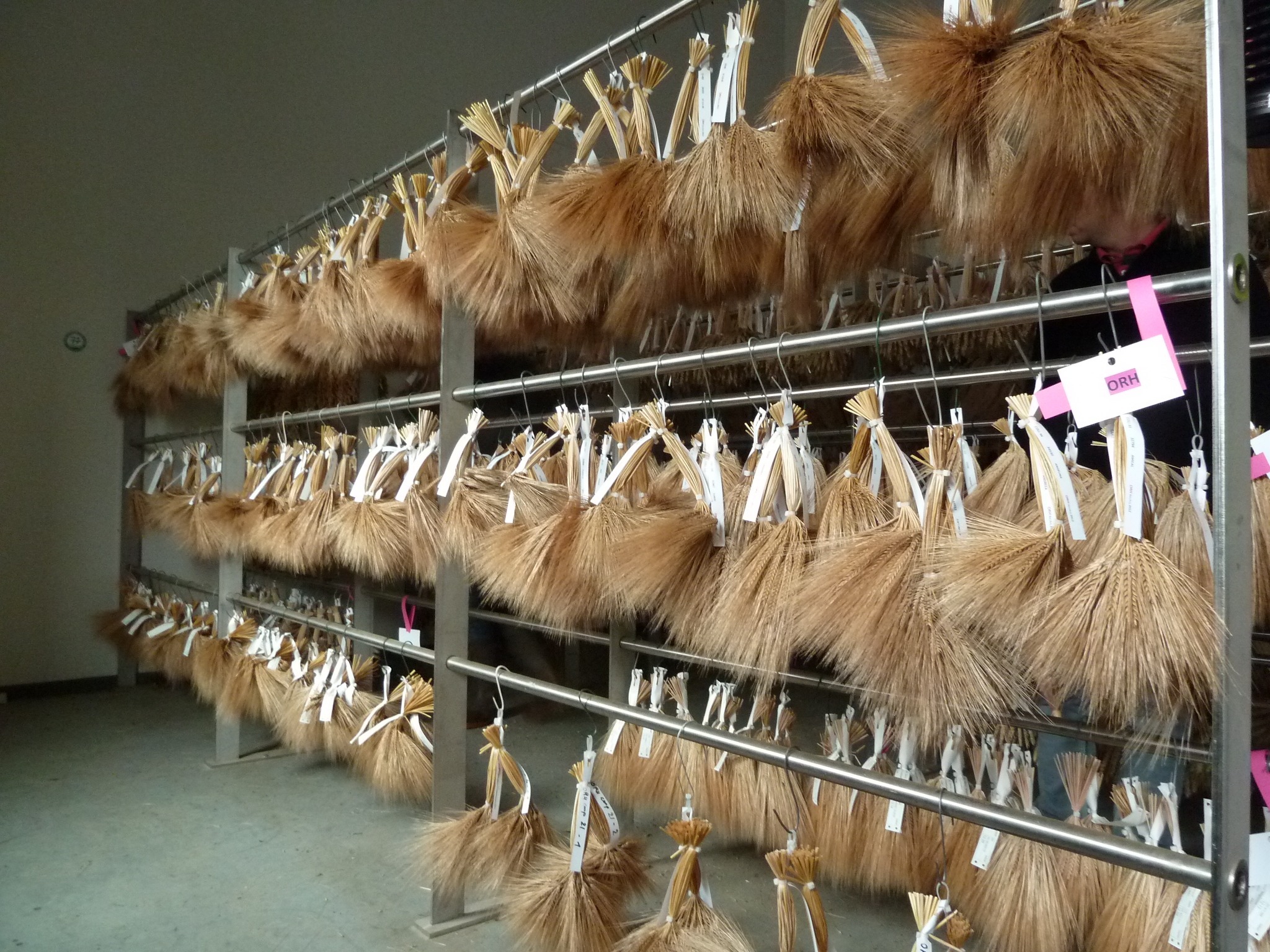Back to mapClose

 See more
See more
Management of genetic resources

Reconciling diversity with changes in society
Genetic resource management aims to maintain cultivated biodiversity and potentially help agriculture adapt to current and future challenges. This involves inventorying, characterizing, evaluating, conserving, and disseminating old varieties.
107,000
Agricultural species were listed by FAO between 2012 and 2019, and 7% are reported as threatened.
The importance of cultivated biodiversity
All current varieties have genetic resources as their parents. These plant genetic resources are made up of the whole range of cultivated species or groups of cultivated species, as well as related wild species, some of which can be used in crossbreeding. Some of these resources are used today; others constitute the reservoirs of tomorrow for needs as yet unknown.
It is important to preserve the diversity of genetic combinations, created or which have emerged over time, in a wide variety of environments, as this provides a pool from which to draw when targeting a wide range of potential solutions. Varieties resulting from crossbreeding, facilitated by the conservation of many collections, are available locally, nationally, and internationally. They are bred for their suitability to different soils, crops, agronomic practices, and climates.
Conservation stakeholders in France
This genetic diversity is conserved by a range of actors in France such as biological resource centres (Inrae, Cirad, IRD, in association with certain national botanical conservatories), associations (including regional conservatories of genetic resources, seed houses, etc.) but also by the plant breeders themselves.
And internationally?
If the genetic resources of interest to seed companies are present in another country, the issues of availability and access to genetic resources are played out at the international level. The rules vary depending on the species. This may involve bilateral agreements between countries or the creation of a multilateral system, a sort of global sharing pool.
Feeding the population in 2050 appears to be a real challenge, for which the United Nations has recognized the importance of plant genetic resources. It is in this sense that France is committed to the FAO's International Treaty on Plant Genetic Resources for Food and Agriculture: the ITPGRFA.
Plant breeders are also key actors in conservation
Plant biodiversity is the primary resource available to plant breeders to contribute to agricultural and food efficiency. To ensure this biodiversity is not depleted, they are simultaneously collectors, curators, and creators of genetic resources. In the field, they study each variety and its genetic and physical characteristics, which helps enrich the working collections essential for creating new varieties.

In practice, which conservation methods are used?
In situ conservation refers to the maintenance and restoration of viable populations of species in their natural habitat and, in the case of cultivated plant species, in the habitat where their distinctive characteristics developed. In France, in situ conservation primarily concerns wild or related plants. This ensures that our cultivated species continue to evolve dynamically and sustainably in contact with their natural and human environments. Worldwide, 6,000 species have been studied in situ, 45% of which are used for food, 17% are wild species related to cultivated species, and 6% are wild plants that constitute a food source.
Genetic resources can also be conserved outside their natural habitats. This method is particularly necessary when the habitat is threatened. It is practiced in orchards, conservatory gardens or in the form of seed banks or vitroplants, generally kept in cold storage. In France, ex situ management is carried out in biological resource centres and genetic resource conservation networks that combine public research and private plant breeders, amateur associations, etc. This ensures the sustainability of the conservation, documentation, evaluation and availability of genetic resources. More than 5.8 million samples of genetic material are preserved in the basic collections of 827 national gene banks in 115 countries, as well as 4 regional gene banks and 13 international gene banks, under medium- or long-term storage conditions.

27
Public-private partnership networks for “ex situ” conservation in France
Preserving the biodiversity of cultivated and related plants
The UFS is one of the eight founding members of the Collection and Biodiversity Fund, created in 2021 to deepen knowledge of cultivated biodiversity and its wild relatives in order to better preserve it and ensure its sustainable use. This fund's mission is to support initiatives aimed at describing resources that reflect genetic and cultural heritage and to ensure the sustainability of these resources by supporting collection managers.













